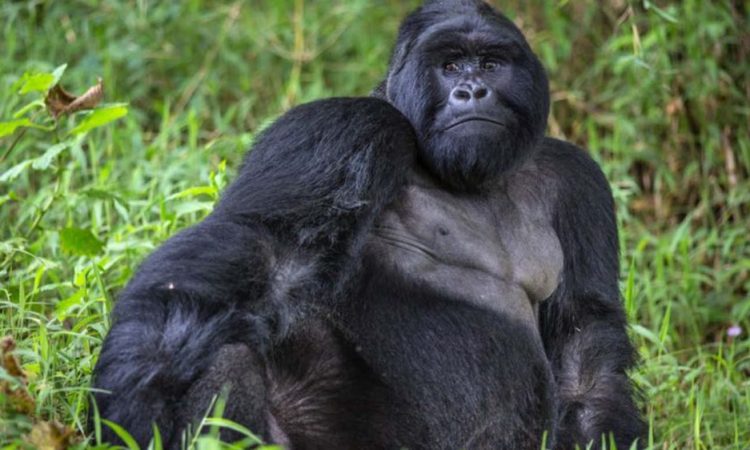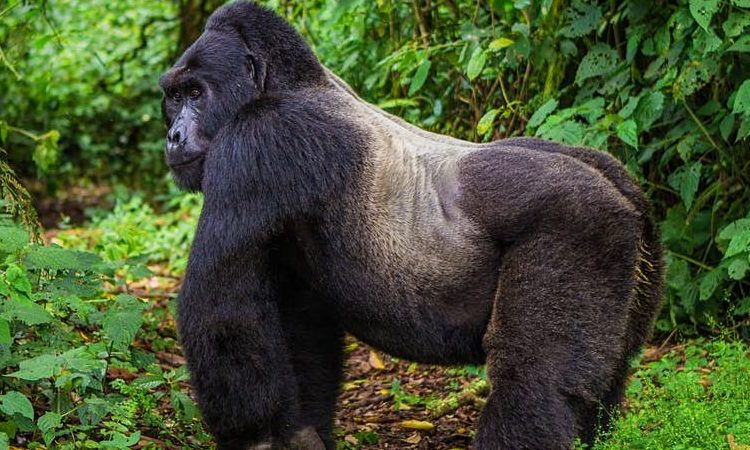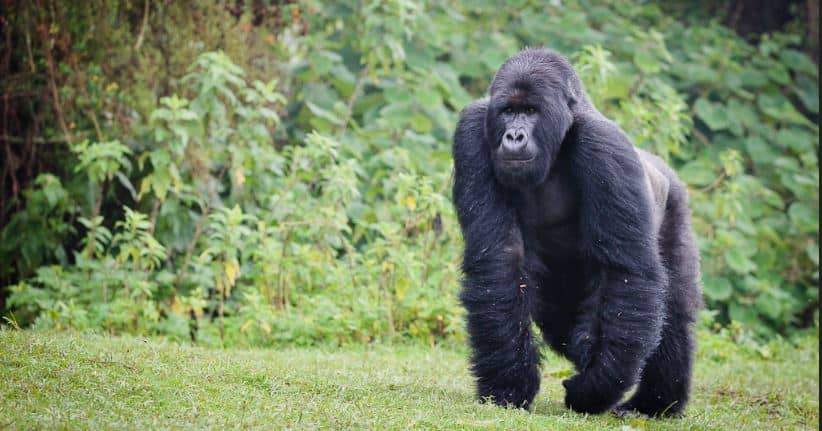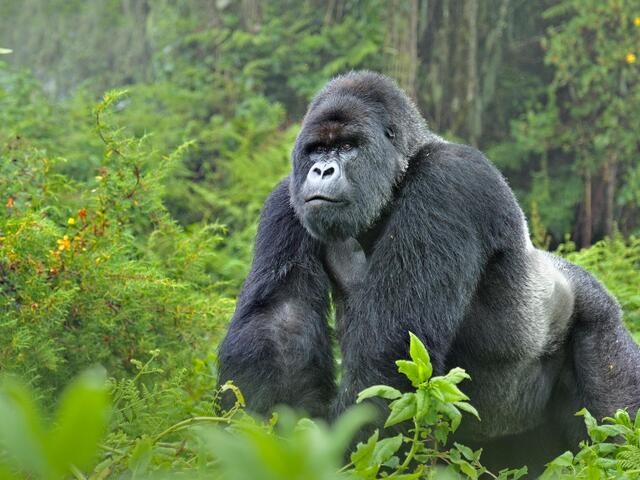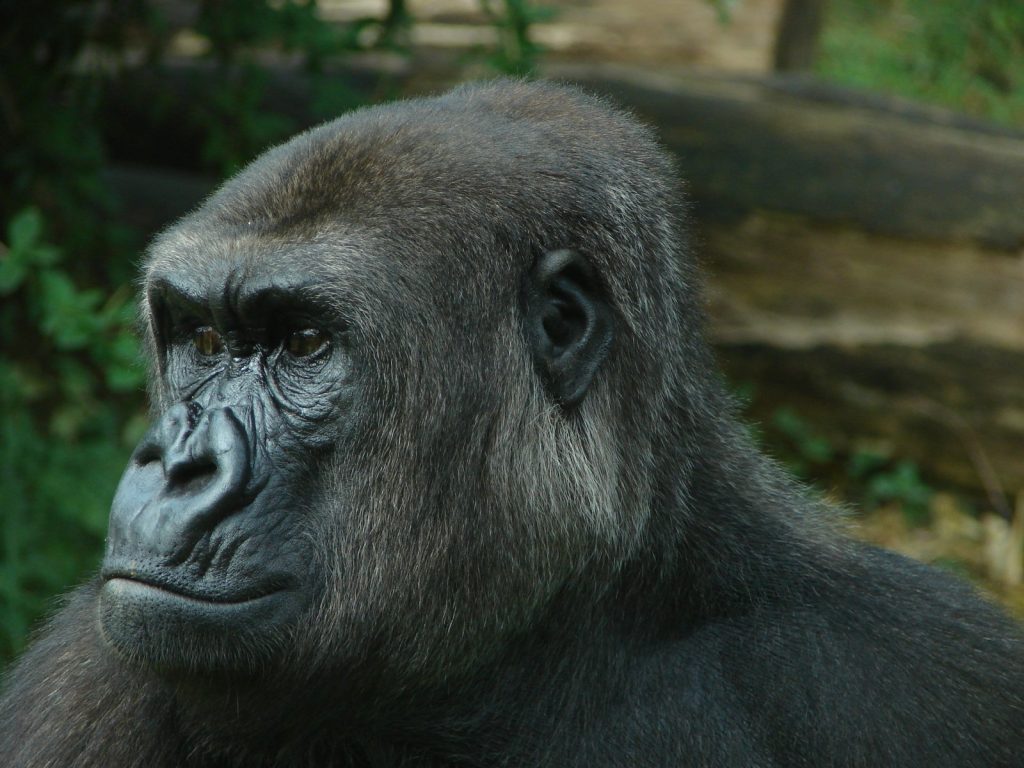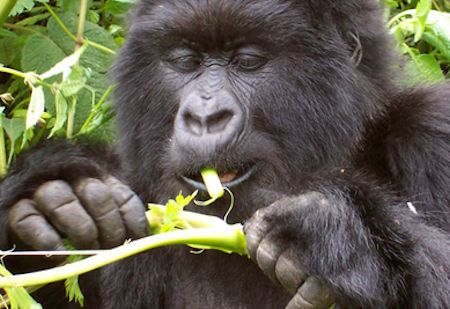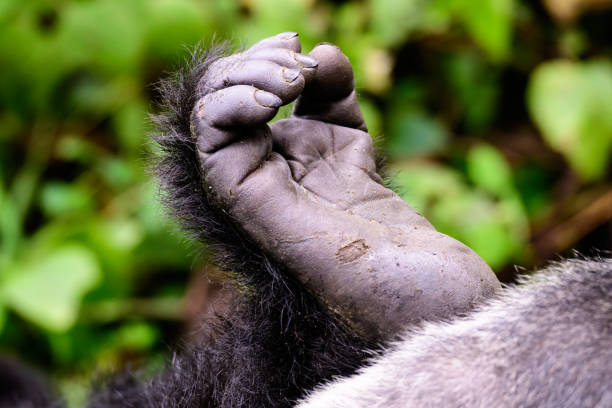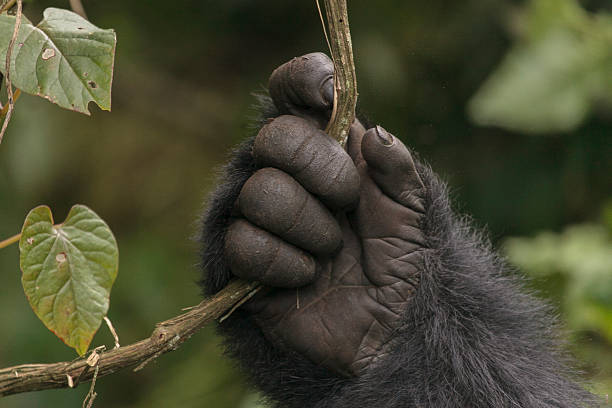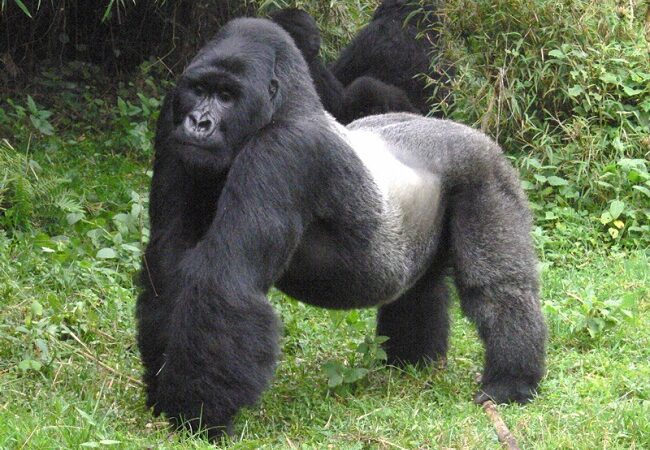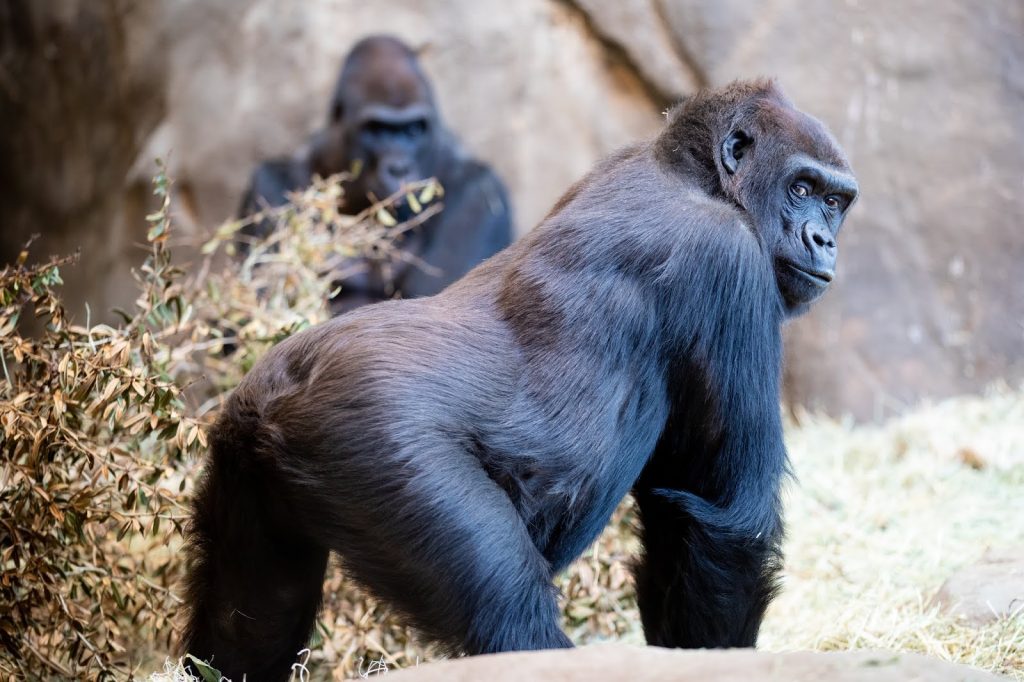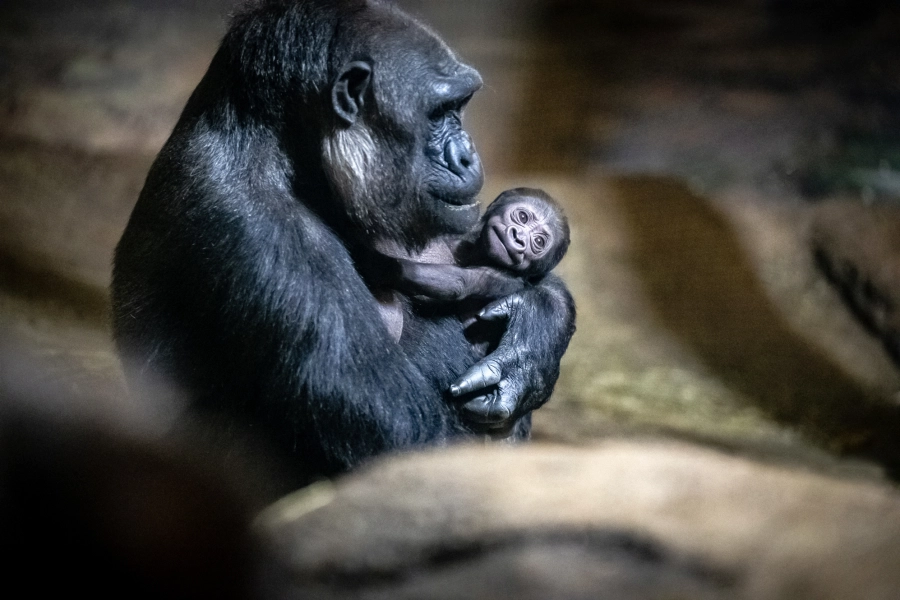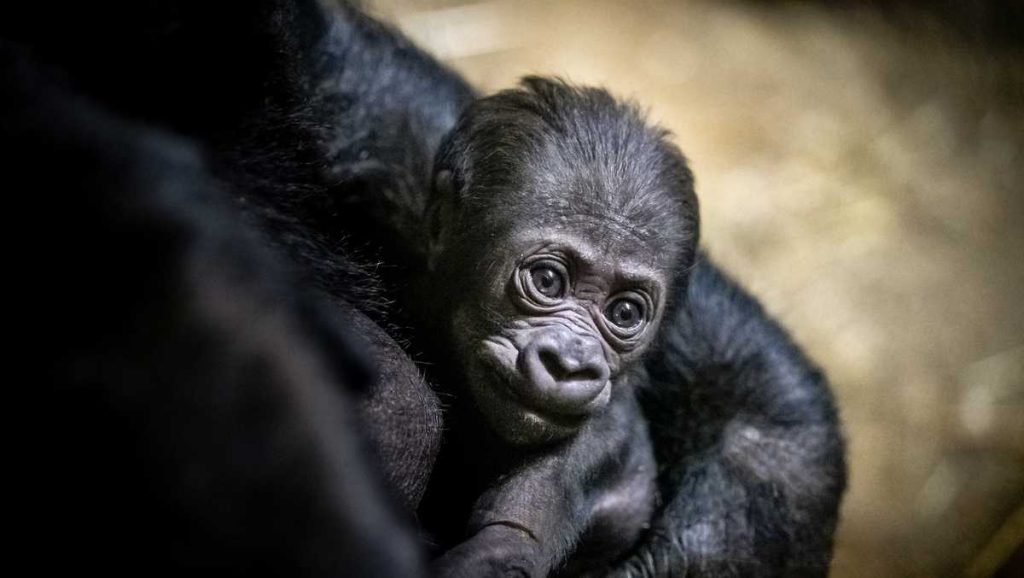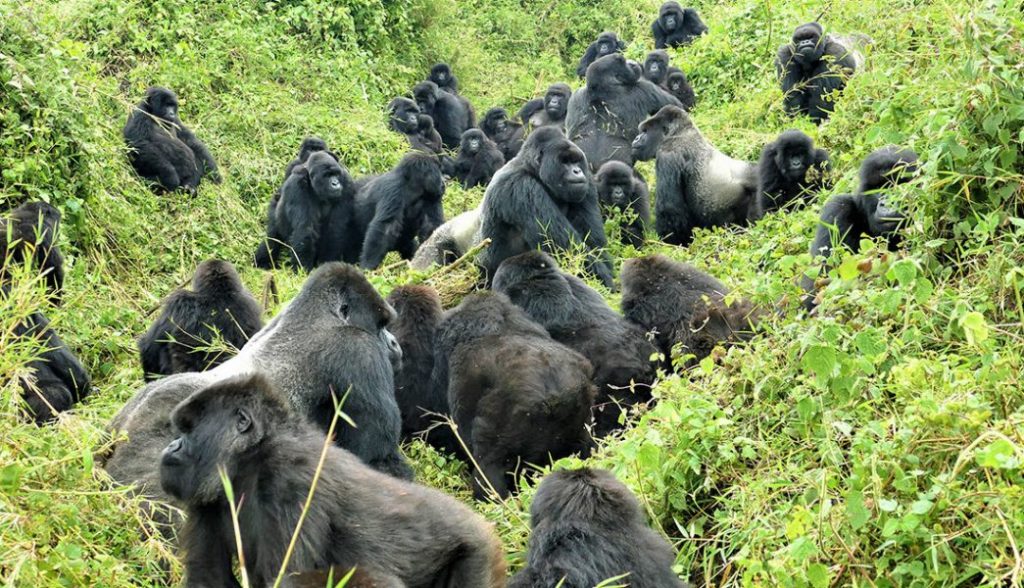Gorilla
Gorilla tracking in Uganda, Rwanda and Congo
Until recently it was considered that there was only one species of gorilla (Gorilla gorilla), divided into three subspecies that live in different parts of Africa, the Western Lowland Gorilla (Gorilla gorilla gorilla), the Eastern Lowland Gorilla (Gorilla Gorilla Graueri) and the mountain gorilla (Gorilla Gorilla Beringei). However, recent DNA evidence has led to the recognition of the eastern and western populations as separate full species classified as Gorilla beringei and Gorilla gorilla respectively.
The two mountain populations, one in the Virunga Volcanoes area on the border between the Democratic Republic of Congo and Rwanda, the other in the Bwindi impenetrable National Park in Uganda, belong to the Eastern group which changes their classification to Gorilla Beringei Beringei. Gorillas are large, quiet, gentle apes that live in Africa. Although gorillas are frequently portrayed as aggressive, dangerous killers, they are shy, peaceful vegetarians. Because of massive loss of habitat, these majestic primates are in great danger of going extinct.
ANATOMY
Gorillas have very long arms (the arms are longer than the legs), and a short, bulky body with a wide chest. Gorillas normally walk on all fours, but are capable of walking upright when needed for short periods of time, such as when they are going to beat their chests, engage in an encounter, or are carrying something (such as food or an infant). Although gorillas occasionally walk on two legs (bipedal), it is far from a common occurrence or sighting.
Hair and Skin:
Gorillas are covered with black hair on most of their body (except their fingers, palms, face, armpits, and bottoms of their feet).
The Head:
Gorillas have a very large head with a bulging forehead, a crest on top (it is called the sagittal crest, and is larger on male gorillas), tiny ears, and small, dark-brown eyes. Gorillas have no tail. Adult gorillas have 32 teeth, with large molars (flat teeth used for chewing food) and large canines (pointy teeth used for biting), which are especially large in the male gorillas. Gorillas each have a unique nose print (like we have unique fingerprints).
Senses:
Gorillas have senses very similar to ours, including hearing, sight (they seem to be slightly nearsighted and to have color vision), smell, taste, and touch.
Hands and Feet:
Gorillas’ hands are very much like ours; they have five fingers, including an opposable thumb. Their feet have five toes, including an opposable big toe. Gorillas can grasp things with both their hands and their feet.
Gorilla foot and hand
SIZE
Male gorillas are much larger than the females, and are almost twice as heavy. Adult male gorillas are called silverbacks because they have a saddle-shaped patch of silver hair on their backs after they are about 12 years of age.
DIET
Gorillas are predominantly herbivores, eating mostly plant material. They forage for food in the forests during the day. They eat leaves, fruit, seeds, tree bark, plant bulbs, tender plant shoots, and flowers. They have been known to eat various parts of over 200 different plant species. Occasionally, gorillas supplement their diet with termites and ants. Gorillas rarely drink water; the water contained in their diet is apparently enough to sustain them. An average adult male eats approximately 50 pounds of food a day.
INTELLIGENCE AND LANGUAGE
Gorillas are very intelligent and can learn extremely complex tasks.
Language:
Some gorillas have been taught sign language by people; these gorillas learned how to form simple sentences and communicate with people.
Tools:
Gorillas have never been observed using tools in the wild, although they have been taught to use them in captivity.
BEHAVIOR AND SOCIAL HABITS
Bands of Gorillas:
Gorillas are shy, social animals that are active during the day (they are diurnal). They live in small groups (or bands) of 6-7 individuals, including one silverback (adult male), a few females, and their young. When the young mature, they go off and join or form another band.
Grooming:
Grooming one another (cleaning the hair of another gorilla) is a major occupation among gorillas in a band. Female gorillas groom their offspring, one another, and the silverback; the silverback does not groom others.
Sleeping Nests:
Each evening, gorillas construct a “nest” for the night in which they will curl up and sleep. These bowl-shaped nests are made out of leaves and other plant material. Nests are only shared by a mother and her nursing offspring. Scientists who study gorillas can easily estimate a local gorilla population by counting the number of “nests.”
Aggression:
Gorillas are not aggressive animals. When an intruder disturbs them, they may make a lot of noise, but they rarely confront another animal.
COMMUNICATION AND VOCALIZATION
Gorillas are generally quiet animals. They communicate with each other using many complicated sounds and gestures. Gorillas use at least 25 recognized vocalizations, including grunts, roars, growls, whines, chuckles, hooting, etc. Some gorilla gestures include chest-beating, high-pitched barks, lunging, throwing objects, staring, lip-tucking , sticking out the tongue, sideways running, slapping, rising to a two-legged stance, etc.
Communication is used to teach the young the many skills that they need to survive, and for other gorillas to communicate about food, social relationships, distress, mating, etc.
LOCOMOTION:
Gorillas knuckle-walk using both their legs and their long arms (putting pressure on their knuckles, with the fingers rolled into the hand). Gorillas rarely walk using only their legs. They can climb trees, but do not do so very often. Gorillas cannot swim.
LIFE SPAN
Gorillas live about 50 years in captivity; their life span in the wild is only about 35 years (like most animals, they live much longer in captivity).
HABITAT
Gorillas are primarily terrestrial (although they lived in trees back in their evolutionary past). Gorillas live in tropical rain forests (in the forest edges and clearings), wet lowland forests, swamps, and abandoned fields.
DISTRIBUTION:
The different subspecies of gorillas live in different parts of western Africa.
-
Subspecies . gorilla, the western lowland gorilla, is found at low altitudes in Cameroon, Central African Republic, Gabon, Congo, and Equatorial Guinea.
-
Subspecies g. Graueri, the eastern lowland gorilla, is found in eastern Zaire.
-
Subspecies g. Beringei, the mountain gorilla, is found at high altitudes (from 5,400 to 12,440 feet or 1,650 to 3,800 m) in Zaire, Rwanda, and Uganda.

